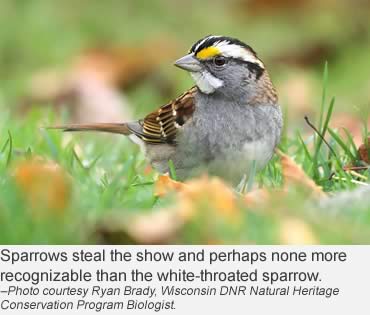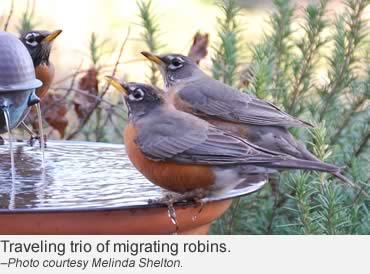If it’s fall, it’s time for some sky watching and migration reports.
Throughout the Mississippi Flyway, the massive bird highway in the sky that stretches from the southern reaches of the Gulf of Mexico to the chilled Canadian territory of Nunavut, thousands of migratory birds are moving.
While hunters have an eye to the ground and watching for deer movement and antlers, the birding community is looking to the skies and backyard feeders to see what travelers might arrive.
Let’s take a peek into just one of the states in the Mississippi Flyway that some 300 bird species call home.
This month in Wisconsin, sparrows are stealing the show, and perhaps none more recognizable than the white-throated sparrow. Great horned and barred owls are actively calling again, while northern saw-whet owls and the first long-eared owls have begun their migrations.
 A few purple finches and pine siskins are being seen, but most notable is a very early common redpoll recently photographed in Marquette County.
A few purple finches and pine siskins are being seen, but most notable is a very early common redpoll recently photographed in Marquette County.
Mid-migration season has arrived, bringing sparrows, waterfowl, and other hardy species as warm weather birds continue to depart. Birders are looking for white-throated, white-crowned, Lincoln's, song, swamp, fox, chipping, and savannah sparrows, among others. Harris's sparrows are showing better than average, and Nelson's sparrows are being seen at wet weedy fields in portions of southern Wisconsin. And, dark-eyed juncos have arrived in force too, especially up north.
Diving ducks like scaup, redheads, and a few surf scoters have begun to move in, while mallards, wood ducks, and both teal were reported in good numbers among other dabbling ducks in recent weeks. American coots, horned grebes, and increasing numbers of common loons are also being seen.
Shorebird numbers are past peak, but a diversity of late-season species continue, including American woodcock, Wilson's snipe, both yellowlegs, American golden and black-bellied plovers, long-billed dowitcher, killdeer and pectoral sandpiper.
Recently were hundreds of sanderlings seen at several sites along Lake Michigan and 15 Hudsonian godwits in Brown County. Other short-distance migrants now on the move include American robins, blue jays, rusty blackbirds, yellow-bellied sapsuckers, northern flickers, ruby-crowned and golden-crowned kinglets, brown creepers, winter wrens, hermit thrushes, and a suite of tundra breeding songbirds that includes American pipit, horned lark, and Lapland longspur.
 Warbler migration is waning save for scores of yellow-rumped and palm warblers and smaller numbers of late species such as pine, orange-crowned, Tennessee, Nashville, Cape May, common yellowthroat, and the occasional black-throated blue. A few ruby-throated hummingbirds continue in mostly southern counties, as do some eastern phoebes, gray catbirds, rose-breasted grosbeaks, and indigo buntings.
Warbler migration is waning save for scores of yellow-rumped and palm warblers and smaller numbers of late species such as pine, orange-crowned, Tennessee, Nashville, Cape May, common yellowthroat, and the occasional black-throated blue. A few ruby-throated hummingbirds continue in mostly southern counties, as do some eastern phoebes, gray catbirds, rose-breasted grosbeaks, and indigo buntings.
Some of the other rare birds spotted include parasitic and pomarine jaegers in Douglas, little gull in Bayfield, white-faced ibis in Brown, and eared grebe in Dane. With more south than north winds in the forecast for the next week, migration will slow down and the possibility of vagrants from the south may increase.
The number and variety of birds that can be seen is nearly overwhelming, but it’s happening in your state too. Enjoy the birds! You can help track migratory birds in your area online.
Learn more about the Pacific, Central, Mississippi and Atlantic Flyways and the state, national and international efforts to protect migratory birds here.
– Resources: U.S. Fish & Wildlife Service, Wisconsin Department of Natural Resources.